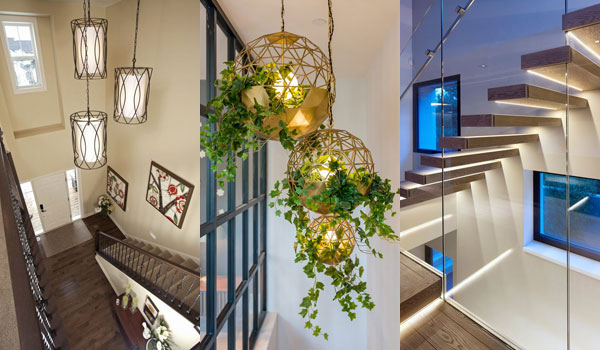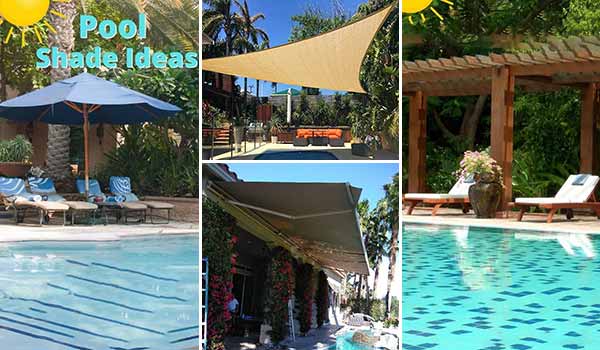Best Mobile Home Skirting Guide for Types Pricing and Installation
Choosing the best mobile home skirting is crucial for both aesthetic appeal and the protection of your home’s foundation. Whether you’re looking to improve your home’s curb appeal, reduce maintenance costs, or ensure proper insulation and ventilation, the right skirting can make all the difference. In this complete guide, we’ll explore the different types of mobile home skirting, their benefits, and provide expert tips on installation and pricing. Whether you’re a DIY enthusiast or planning to hire a professional, this guide will help you make informed decisions and enhance your mobile home for years to come.
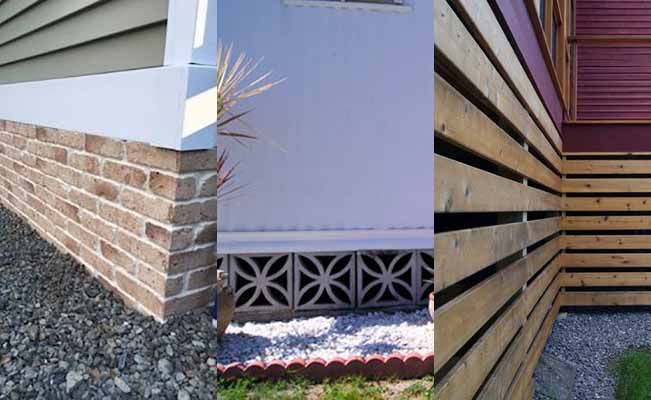
Types of Mobile Home Skirting Panels
When it comes to mobile home skirting, there are numerous options to choose from, each offering its own set of advantages and disadvantages. Just like siding, the price of skirting panels varies significantly, and the more premium types tend to be more durable, while the cheaper versions may be thinner and less long-lasting.
The visual appeal of skirting panels also varies, meaning that you can completely transform the exterior look of your mobile home by simply changing the skirting. Whether you’re aiming for a sleek modern look or something more rustic and earthy, there’s a skirting option that suits your style.
Unlike traditional houses that are built on solid foundations, mobile homes require skirting panels as part of their setup. Skirting serves as an essential component, not just for aesthetics but also for providing protection against weather elements, animals, and temperature fluctuations.
| Skirting Material | Price Range | Key Features | Pros | Cons |
|---|---|---|---|---|
| Vinyl | $400–$1,400 | Available in various textures and thicknesses. Insulated versions cost more. | Affordable, easy to install, variety of styles. | Insulation upgrades can double the cost. |
| Simulated Rock | $700–$1,500 | Plastic panels designed to mimic the look of natural rock. Neutral tones like gray and brown. | Natural look, cost-effective, easy installation. | Not as durable as real rock. |
| Faux Stone | $1,100–$2,900 | Polyurethane panels mimicking real stone texture. | Durable, enhances curb appeal, adds home value. | More expensive than vinyl, limited styles. |
| Concrete | $700–$1,600 | Made from cinder blocks or poured concrete. | Extremely durable, permanent, offers insulation. | Labor-intensive installation, requires professionals. |
| Brick | $700–$2,500 | Real or faux brick panels; faux brick panels are easier and cheaper to install. | Classic, elegant, adds home value. | Real brick is difficult and expensive to install. |
| Wood | Varies | Customizable, often built based on individual preferences. | Natural look, customizable design. | Requires maintenance, prone to rot and wear. |
| Metal | $500–$2,000 | Steel, aluminum, or galvanized iron panels. Available in flat or imprinted designs. | Sleek, durable, fire-resistant. | Prone to corrosion, may require extra care in coastal areas. |
| Foam | $1,000–$3,000 | Insulated panels designed to provide energy efficiency. | Great for insulation, reduces energy costs. | Expensive, less visually appealing. |
1. Simulated Rock Panels – Natural Look Without the Weight
💰 Estimated Cost: $700–$1,500
Want the charm of stone without the cost or weight? Simulated rock skirting is a clever alternative. Made from molded plastic, these panels are designed to mimic the look of real stone and come in natural earth tones like gray, brown, and tan. They’re a great choice for homeowners who want to enhance their curb appeal with a more rustic look.
Although it doesn’t feel like stone, simulated rock offers the visual style at a fraction of the cost and is easy to install compared to actual stone or concrete skirting.
2. Vinyl Skirting – Popular and Affordable for Most Homes
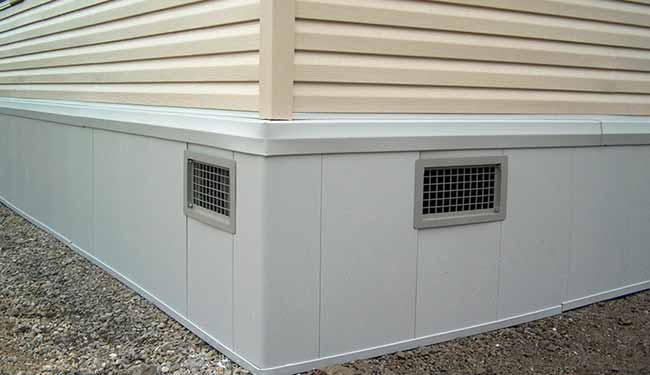
💰 Estimated Cost: $400–$1,400
Vinyl skirting is one of the most commonly used types for mobile homes—and for good reason. It’s cost-effective, lightweight, and comes in a wide variety of textures and thicknesses. Whether you’re covering a small trailer or a large manufactured home, vinyl panels are easy to work with and widely available.
One important thing to note is that if you live in a colder climate, you may want to upgrade to insulated vinyl skirting, which provides better temperature control and prevents pipes from freezing. This upgraded version can cost nearly double the price of basic panels—but it’s well worth it for winter energy savings.
3. Faux Stone Skirting – Realistic and Durable
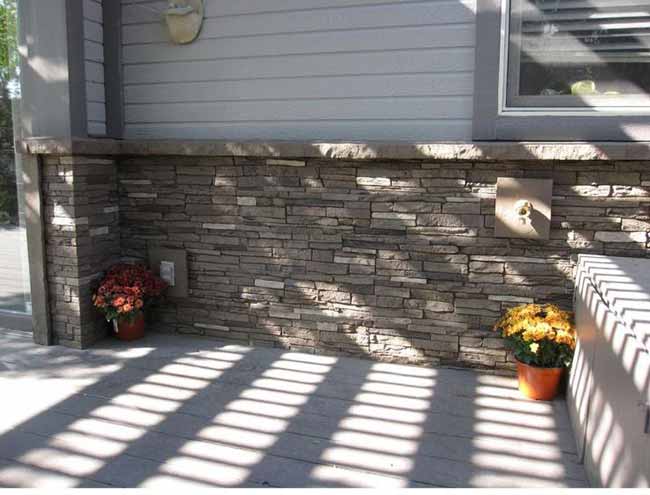
💰 Estimated Cost: $1,100–$2,900
Faux stone skirting is one step up in realism and durability compared to simulated rock. These panels are often crafted from polyurethane and molded to resemble natural stone in both shape and texture. The result is a highly convincing, long-lasting finish that adds serious value to your home.
While faux stone is pricier than other options, it’s a smart investment if you want to increase resale value or give your mobile home a more permanent, high-end appearance.
4. Concrete Skirting – Solid and Long-Lasting
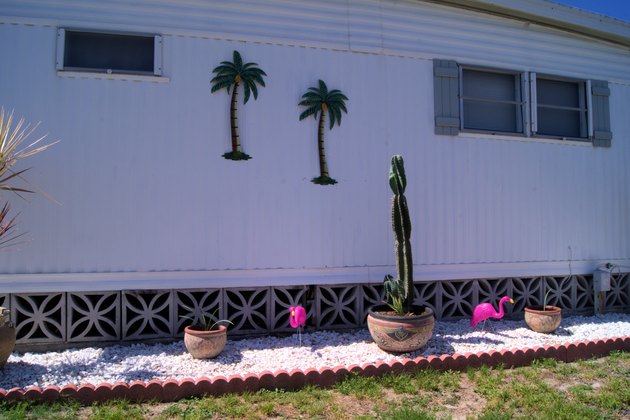
💰 Estimated Cost: $700–$1,600
If you’re looking for something sturdy and long-term, concrete skirting is hard to beat. Typically made from cinder blocks or poured concrete, this option makes your mobile home feel more anchored and secure. It’s also great for preventing moisture, animals, and cold air from getting underneath.
However, concrete is labor-intensive to install and usually requires a professional. It’s not a weekend DIY project, but the result is a strong, permanent structure that can last for decades.
5. Wood Skirting – Customizable and Natural
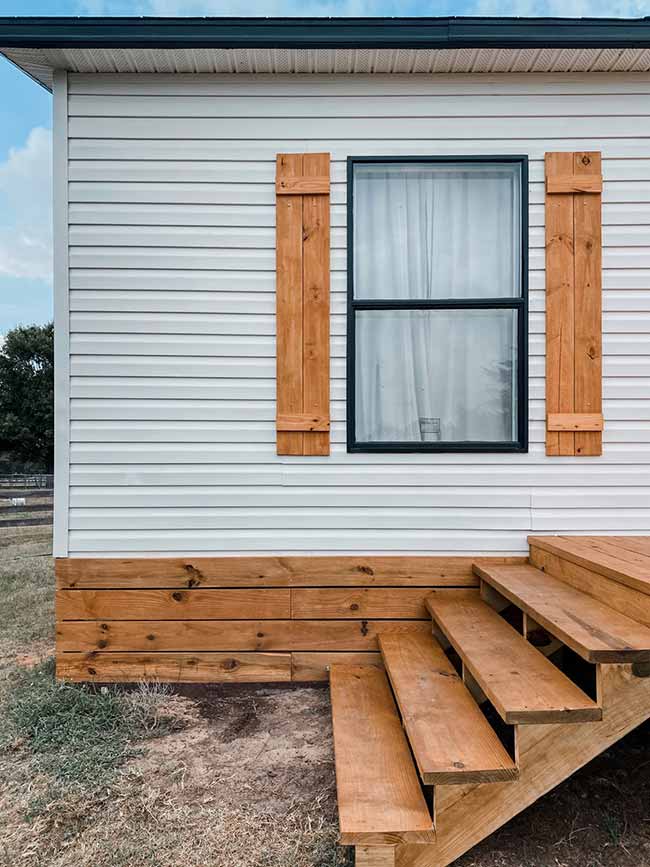
💰 Estimated Cost: Varies
Wood skirting is the go-to choice for those who love customization. Rather than buying pre-made panels, wood skirting is often built and tailored to fit individual needs and preferences. Whether you opt for pine, oak, or cedar, you can choose the type of wood, design, and finish that best complements your mobile home.
Wood skirting offers a natural, warm look and is often used for more rustic or farmhouse-style homes. However, it requires regular maintenance to prevent rot and wear, particularly in areas with heavy rainfall or humidity. Be prepared for some upkeep, as wood skirting needs periodic sealing or staining.
6. Metal Skirting – Durable and Sleek
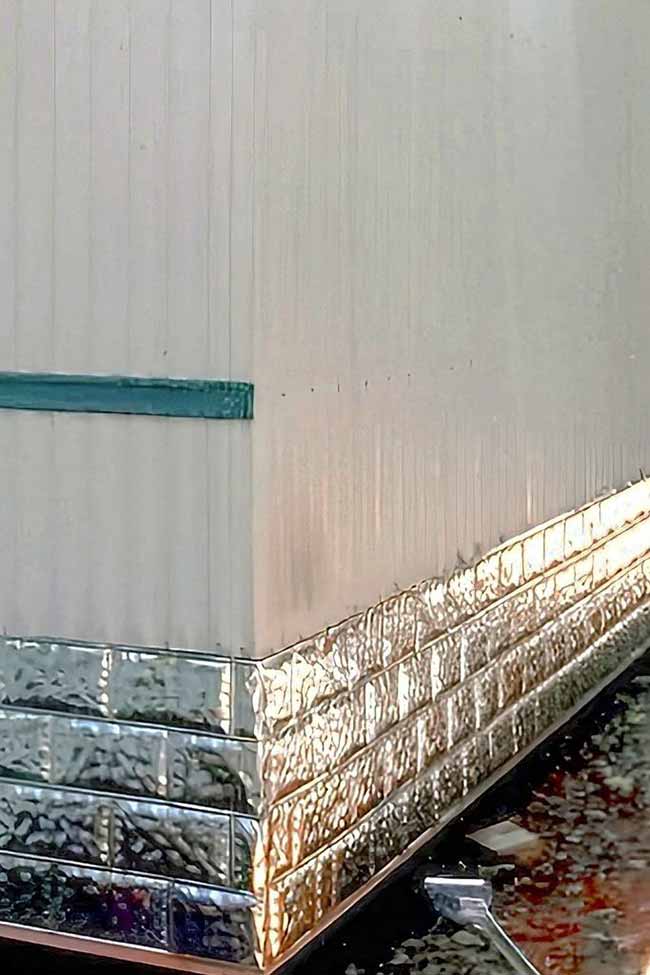
💰 Estimated Cost: $500–$2,000
For a more industrial or modern look, metal skirting is a strong contender. Made from various metals such as steel, aluminum, or galvanized iron, this type of skirting is known for its durability and sleek appearance. Metal panels are available in both flat and imprinted designs, offering flexibility in terms of style and function.
Installation is straightforward, similar to vinyl skirting, with predrilled holes for easy attachment. However, metal skirting is prone to corrosion, so it’s crucial to choose the right type for your climate. In coastal areas with salty air, stainless steel is a better choice to avoid rust.
7. Foam Insulated Skirting – Energy-Efficient and Practical
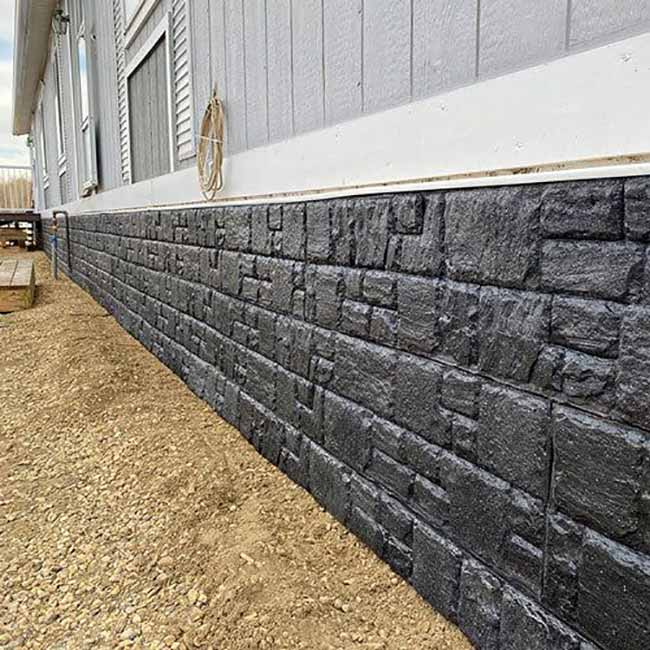
💰 Estimated Cost: $1,000–$3,000
If energy efficiency is a priority for you, foam insulated skirting is a great option. This type of skirting comes in small panels designed to insulate the underside of your mobile home, keeping the interior temperature regulated year-round. Foam panels are often used in colder climates where energy bills can skyrocket during the winter months.
While foam skirting panels are more expensive due to their insulation properties, they help reduce energy costs by preventing heat loss. They’re available in different thicknesses, and while they don’t offer the same aesthetic appeal as other materials, their practical benefits are hard to ignore.
8. Brick Skirting – Timeless and Elegant
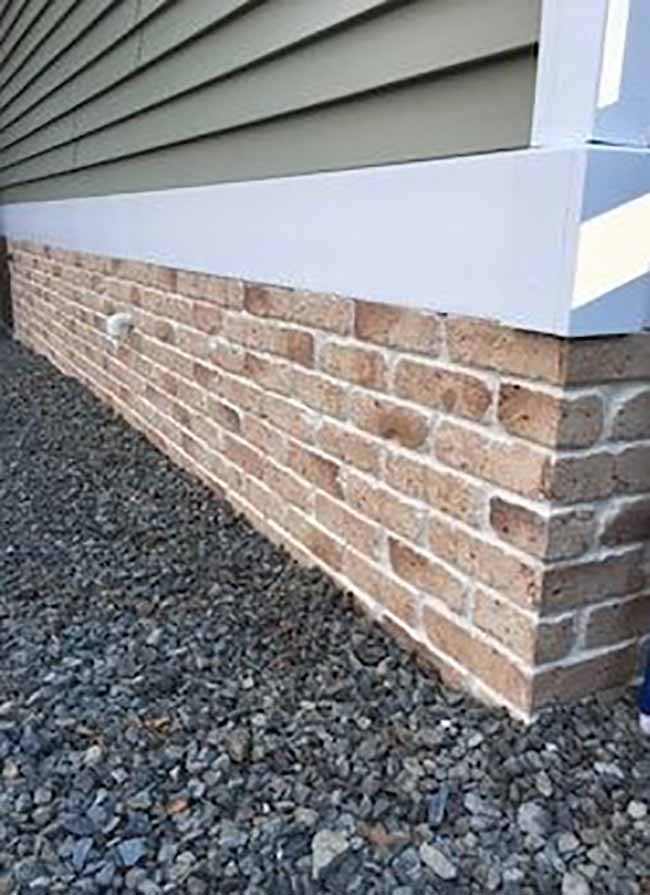
💰 Estimated Cost: $700–$2,500
For a more elegant, classic look, brick skirting can give your mobile home a timeless feel. You can either opt for real brick blocks or faux brick panels, depending on your budget and desired style. Real brick provides a solid, durable foundation but is more expensive and harder to install, requiring skilled labor.
Faux brick, on the other hand, is less costly and easier to install, mimicking the look of brick without the weight. Whether you choose real or faux brick, this skirting option adds a high-end aesthetic and can increase the value of your home.
9. Timber Skirting – A Classic, Low-Maintenance Option
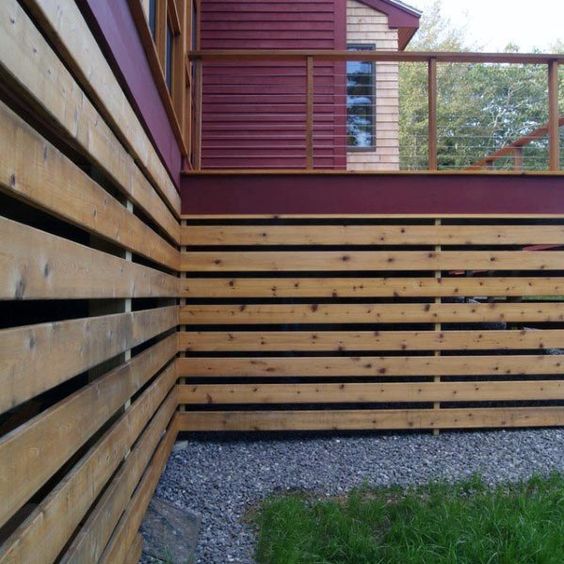
Timber skirting offers a natural, rustic look that complements a variety of home styles. Typically made from pressure-treated pine decking boards or composite wood materials, this type of skirting is durable and low-maintenance. Composite options, in particular, require less upkeep compared to traditional wood and can resist the elements better, making them ideal for long-term use.
For an average single-wide mobile home, expect to pay anywhere from $1,500 to $2,200 for timber skirting, while double-wide homes may cost between $3,200 and $4,500. The price variation depends on the materials you choose—pressure-treated pine is generally more affordable, while composite wood options tend to be on the pricier side.
Timber skirting adds a timeless appeal to your home, but it does require regular maintenance if you opt for traditional wood. You may need to stain or seal the boards periodically to prevent damage from moisture, insects, or sun exposure. Composite options, however, are more resistant to these issues and are often favored for low-maintenance needs.
Mobile Home Skirting Cost Factors:
When installing mobile home skirting, several factors influence the overall price you’ll pay. These include the size of your mobile home, the material you choose, the labor costs, and the location of the home.
1. Size of Skirting
The size of the mobile home significantly impacts the cost, as it determines how much material you need. The price of skirting panels typically ranges from $6 to $8 per linear foot. To estimate how much material you’ll need, simply measure the perimeter of your home and multiply it by the height of the skirting required. This will give you the linear footage needed.
For a typical single-wide mobile home, you will need around 150 linear feet of skirting panels, which costs between $950 and $1,250 on average. The larger your mobile home, the higher the material cost.
Material Costs for Skirting Panels by Linear Foot
| Linear Feet | Average Cost for Panels |
|---|---|
| 100 | $650 – $850 |
| 150 | $950 – $1,250 |
| 200 | $1,250 – $1,650 |
| 250 | $1,550 – $2,100 |
| 300 | $1,850 – $2,500 |
2. Labor Costs
Labor is one of the most significant cost factors for mobile home skirting installation, accounting for approximately 60% of the total project budget. Professional skirting installers generally charge between $65 to $130 per hour, excluding materials. In most cases, professionals can complete the installation for standard-sized mobile homes within a day.
Hiring a local installer who specializes in mobile home skirting ensures a faster, more efficient installation, while ensuring that the skirting is properly secured and fits the home’s dimensions.
3. Location of the Mobile Home
The location of the mobile home can also affect project costs. If your home is located on a slope, it may require custom-cut skirting to match the shape of the land. This type of installation can increase material and labor costs, as precise measurements and specialized cutting are necessary.
4. Removal of Old Skirting
If you’re replacing existing skirting, you’ll need to factor in removal costs. The labor to remove old skirting typically costs between $220 to $550, depending on the material. Heavy materials like concrete or metal may result in higher removal fees.
If you’re comfortable handling the removal yourself, you can save some money on the overall cost. However, you may need a few tools, such as a nail remover, pry bar, and tin snips, to get the job done. Be careful when handling the old skirting, as some materials can have sharp edges.
DIY Mobile Home Skirting Installation vs. Hiring a Professional
If you’re handy and have the right tools, DIY mobile home skirting installation can save you a significant amount of money—up to 50% to 60% of the total cost. Vinyl skirting is the most common and DIY-friendly option, and installation generally requires basic tools like a hammer, measuring tape, tin snips, a plumb bob, and a snap lock punch tool. Before getting started, be sure to check and follow any local regulations to ensure compliance with city or county requirements.
However, depending on the type of skirting you select, your warranty may be affected if you choose to install it yourself. Some manufacturers may require professional installation to maintain the warranty. If you decide to hire a professional, local modular home builders who specialize in skirting can charge anywhere from $70 to $150 per hour, depending on the complexity of the job. Alternatively, a handyperson may be able to complete the installation for a more budget-friendly price, usually around $35 to $75 per hour.
In general, professional installation for mobile home skirting typically takes about one full day to complete, making it a convenient option if you want to avoid the hassle of doing it yourself.
Installation Tips for Mobile Home Skirting
When researching mobile home skirting ideas, it’s important to keep in mind that all types of skirting require careful and precise installation. Achieving a professional result takes meticulous planning and attention to detail, ensuring that the skirting provides both lasting protection and aesthetic appeal.
Proper installation not only enhances the skirting’s function but also minimizes the need for future repairs or adjustments. Following key steps and using quality materials will ensure your skirting performs its role efficiently while also boosting your home’s curb appeal for years to come.
Here are some essential tips to guide you through the installation process:
1. Measure Carefully
Accurate measurements are the foundation of a successful skirting installation. Start by measuring the height from the ground to the base of your mobile home, as well as the entire perimeter of the home. For a typical single-wide mobile home, the perimeter might be around 150 linear feet, while a double-wide can range up to 200 to 250 feet. These precise measurements will help ensure that each skirting panel fits properly, preventing gaps that could compromise insulation and security.
2. Prepare the Ground
Before installing skirting, take time to clear and level the ground around your home’s base. Remove any rocks, roots, or other debris to create a stable, even surface. This is crucial for preventing future shifting or settling of the skirting panels. A properly leveled foundation will make the installation process smoother and ensure that the skirting stays in place for years to come.
3. Add Ventilation
Ventilation is a critical aspect of skirting installation. Installing ventilation panels beneath your skirting will allow for proper airflow under the mobile home. This is especially important for reducing humidity and preventing issues like mold or mildew. By placing vents evenly around the skirting, you can ensure balanced air circulation, which helps maintain your home’s foundation and air quality. A common guideline is to install one vent for every 150 to 200 square feet of skirting.
4. Choose Proper Fasteners and Tools
The durability of your skirting largely depends on the fasteners and tools you use. Opt for rust-resistant fasteners like stainless steel nails or coated screws, as these will hold the skirting securely in place. Investing in high-quality fasteners upfront will prevent frequent replacements and ensure that your skirting remains intact through seasonal weather changes. Use tools such as a power drill for quick, consistent fastening, and a level to ensure your panels are aligned properly.
5. Seasonal Adjustments
In regions with cold winters, consider using insulated panels to reduce drafts and prevent freezing. These panels help to maintain a stable indoor temperature, keeping your home warmer during the colder months. It’s also important to inspect the skirting regularly, especially after season changes, to catch any early issues like cracks, loosened panels, or damaged sections. A simple seasonal inspection can save you from costly repairs and keep the skirting functioning optimally year-round.
6. Ensure Proper Drainage
Drainage plays a vital role in protecting your skirting and the foundation of your mobile home. Slightly slope the ground away from the home to direct water runoff away from the skirting. This reduces the risk of moisture damage, mold growth, and erosion. Proper drainage helps preserve both the skirting and your home’s foundation by preventing water from pooling near the structure. Consider installing drainage pipes or gravel channels around the base for enhanced protection.
7. Secure Bottom Edges
Finally, ensure that the bottom edges of the skirting are anchored securely to the ground. Use methods like ground spikes, bricks, or a track system to add extra stability. This reinforcement will prevent the skirting panels from lifting or shifting, especially during high winds or extreme weather conditions. Securing the bottom of the skirting ensures that it stays intact and protected from damage over time.
By following these installation tips and paying attention to detail, you can ensure that your mobile home skirting provides not only a beautiful and protective finish but also lasting functionality. Whether you’re tackling the project yourself or hiring a professional, these steps will help you achieve a strong, durable skirting installation.

